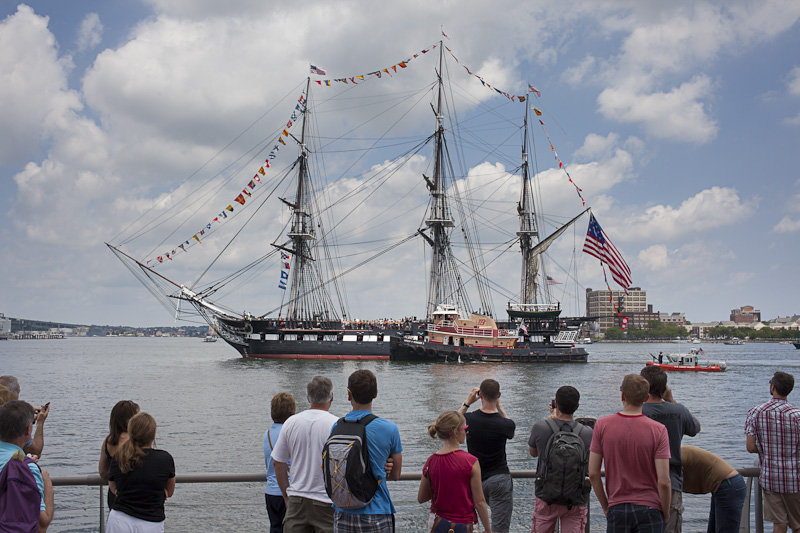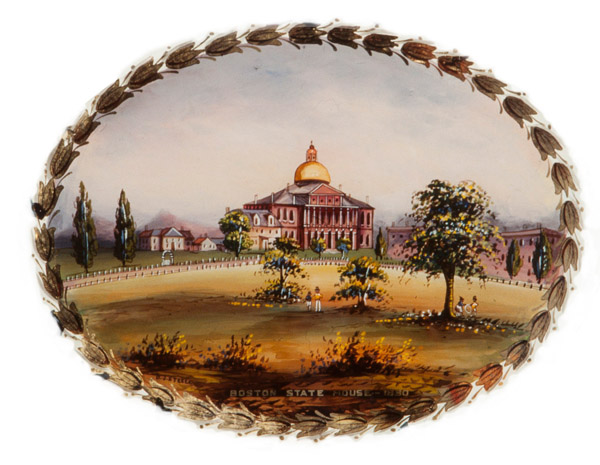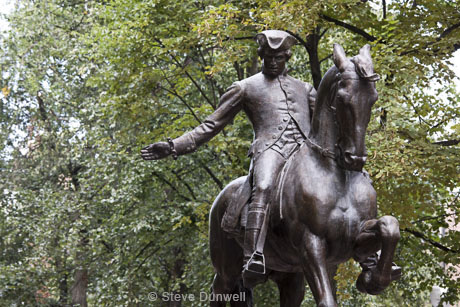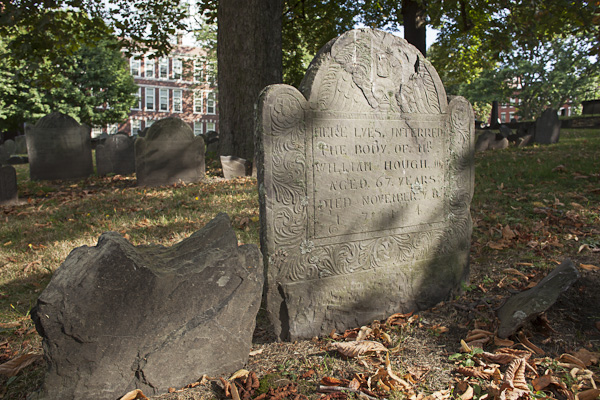 Tombstone of William Hough, 1714. Copp’s Hill, the Town’s second burying ground, was established in 1659 on a hill named for shoemaker William Copp. The site soon rivaled the Common as a public venue, hosting such spectacles as the 1704 execution of seven pirates. Cannons mounted near here shelled Charlestown during the Battle of Bunker Hill, 1775.
Tombstone of William Hough, 1714. Copp’s Hill, the Town’s second burying ground, was established in 1659 on a hill named for shoemaker William Copp. The site soon rivaled the Common as a public venue, hosting such spectacles as the 1704 execution of seven pirates. Cannons mounted near here shelled Charlestown during the Battle of Bunker Hill, 1775.
Tag Archives: Old North church photo
USS Constitution turn-around July 4th photo
Mass. State House painting, Freedom Trail
Copps Hill burying ground photo
Latin School – Freedom Trail – photo
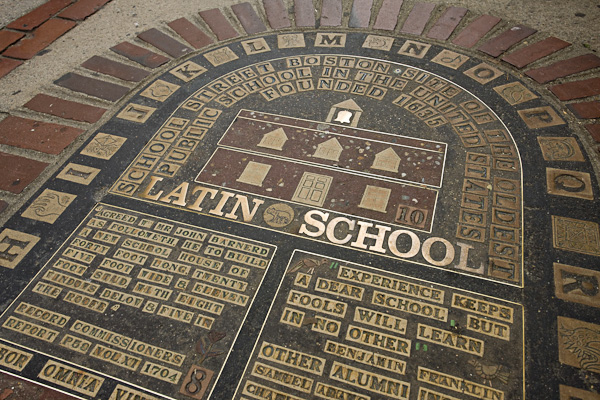 In 1635, Boston established the first “public” Latin or Grammar School in America, resolving that Philemon Purmont, a shopkeeper, “be entreated to become a schoolmaster for the teaching and nourtering of the children with us.” The original Latin School was demolished in 1844 to make way for City Hall. This plaque decorates the sidewalk nearby.
In 1635, Boston established the first “public” Latin or Grammar School in America, resolving that Philemon Purmont, a shopkeeper, “be entreated to become a schoolmaster for the teaching and nourtering of the children with us.” The original Latin School was demolished in 1844 to make way for City Hall. This plaque decorates the sidewalk nearby.
Old North Church skyline photo
Paul Revere ride photo Freedom Trail
Old State House photo, Boston, MA
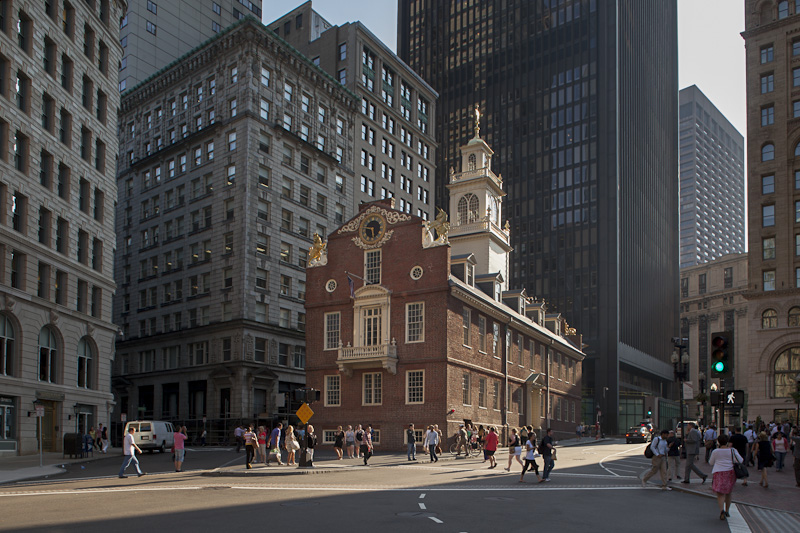 Boston’s oldest public building, erected in 1713 overlooking Long Wharf, replaced an old wooden Town House dating from 1658. After the Great fire of 1711, the town financed a brick building with a room for the Elder’s meeting, a library, an arsenal, and an arcaded farmers’ market “for the country people that come with theire provisions…to sitt dry and warme both in colde raine and durty weather.” It became the hub of the colony’s trade.
Boston’s oldest public building, erected in 1713 overlooking Long Wharf, replaced an old wooden Town House dating from 1658. After the Great fire of 1711, the town financed a brick building with a room for the Elder’s meeting, a library, an arsenal, and an arcaded farmers’ market “for the country people that come with theire provisions…to sitt dry and warme both in colde raine and durty weather.” It became the hub of the colony’s trade.
Paul Revere House photo, Boston, MA
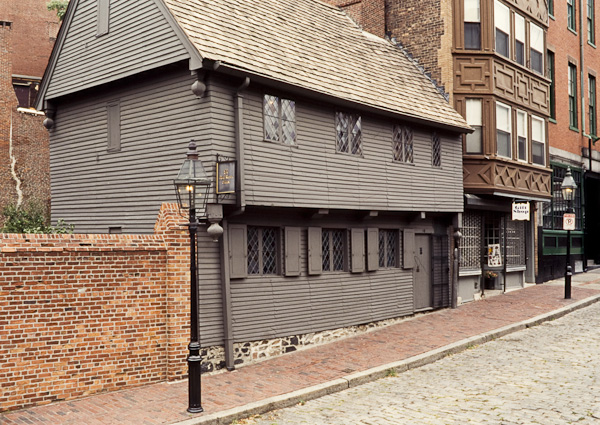 Built in 1681, this is the oldest residence extant in Boston. Paul Revere, prospering as a silversmith, bought it for 214 pounds in 1770. The Revere’s bedroom probably occupied the front of the second floor. Other rooms in the rear of the house and on the third floor provided space for the many children borne by Revere’s two wives.
Built in 1681, this is the oldest residence extant in Boston. Paul Revere, prospering as a silversmith, bought it for 214 pounds in 1770. The Revere’s bedroom probably occupied the front of the second floor. Other rooms in the rear of the house and on the third floor provided space for the many children borne by Revere’s two wives.
Boston Massacre site photo
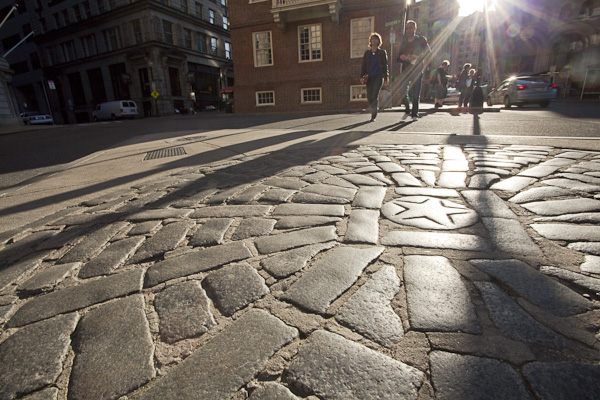 On March 5, 1770, troops occupying Boston to enforce the new British taxes fired into a mob of about sixty rowdy Bostonians, wounding eight and killing five. This circle marks the spot of the Boston Massacre, just in front of the Old State House. Crispus Attucks, an African-american, was among the first to die.
On March 5, 1770, troops occupying Boston to enforce the new British taxes fired into a mob of about sixty rowdy Bostonians, wounding eight and killing five. This circle marks the spot of the Boston Massacre, just in front of the Old State House. Crispus Attucks, an African-american, was among the first to die.

